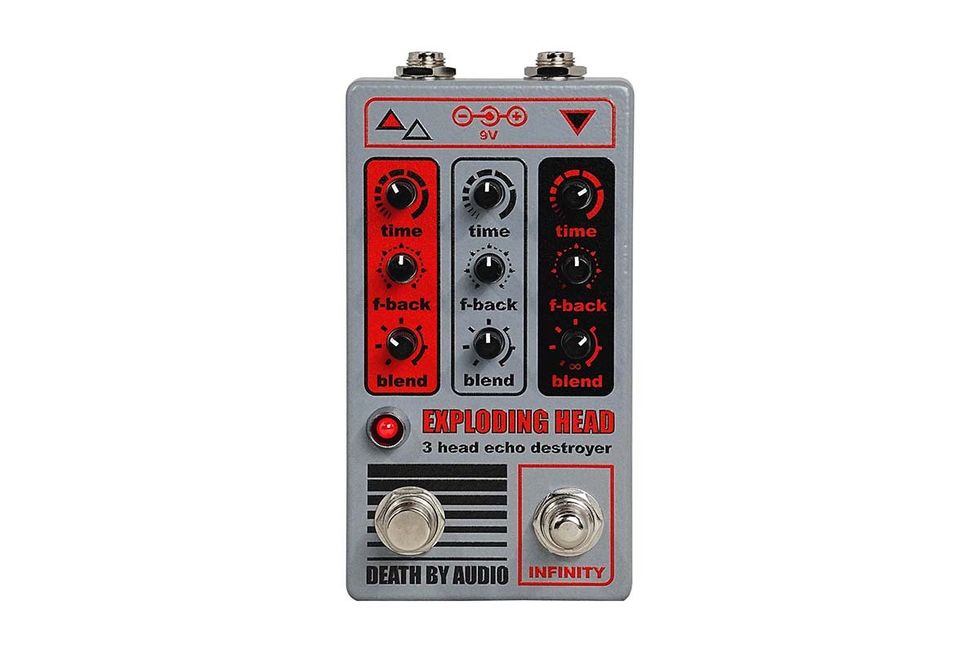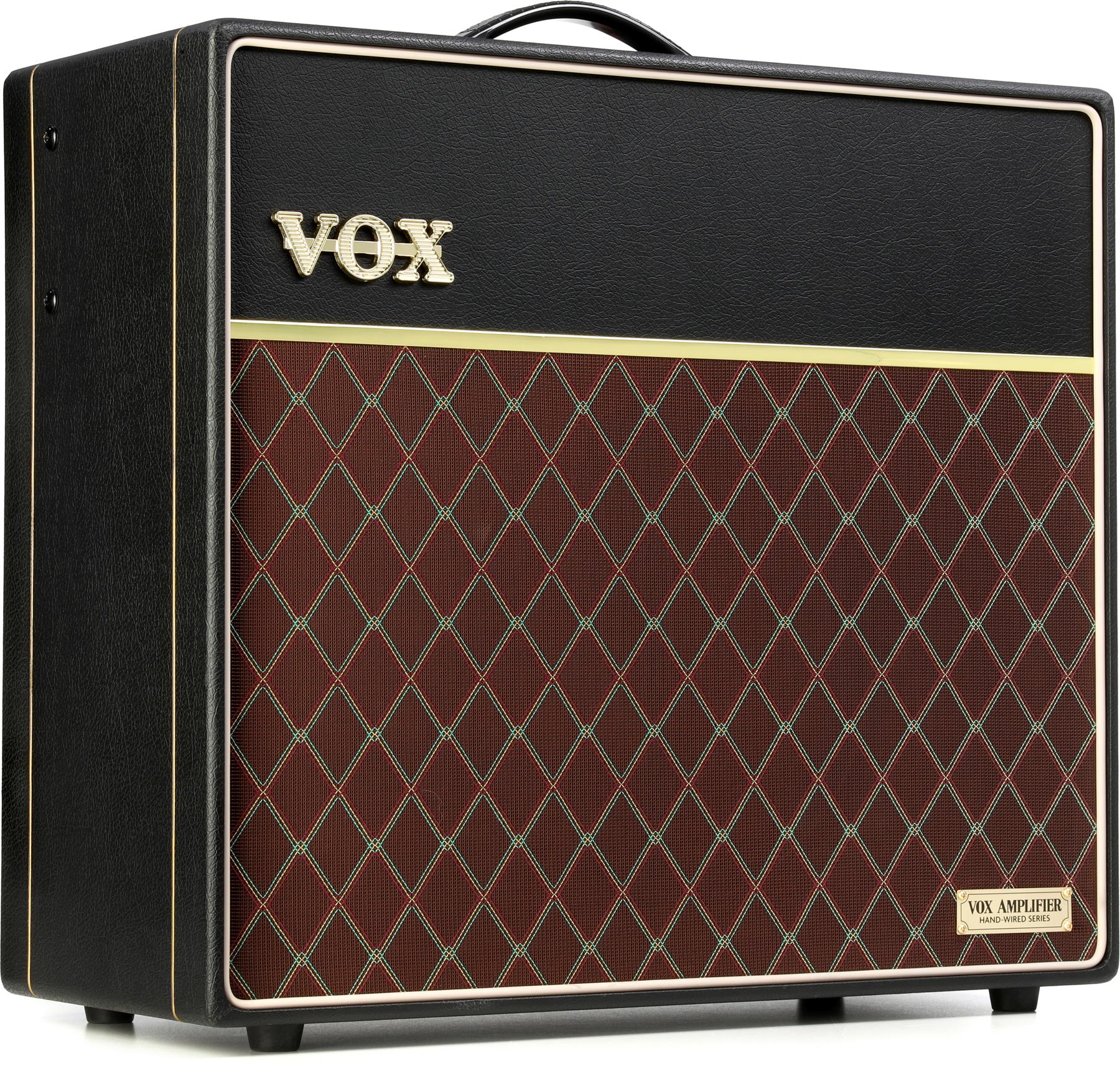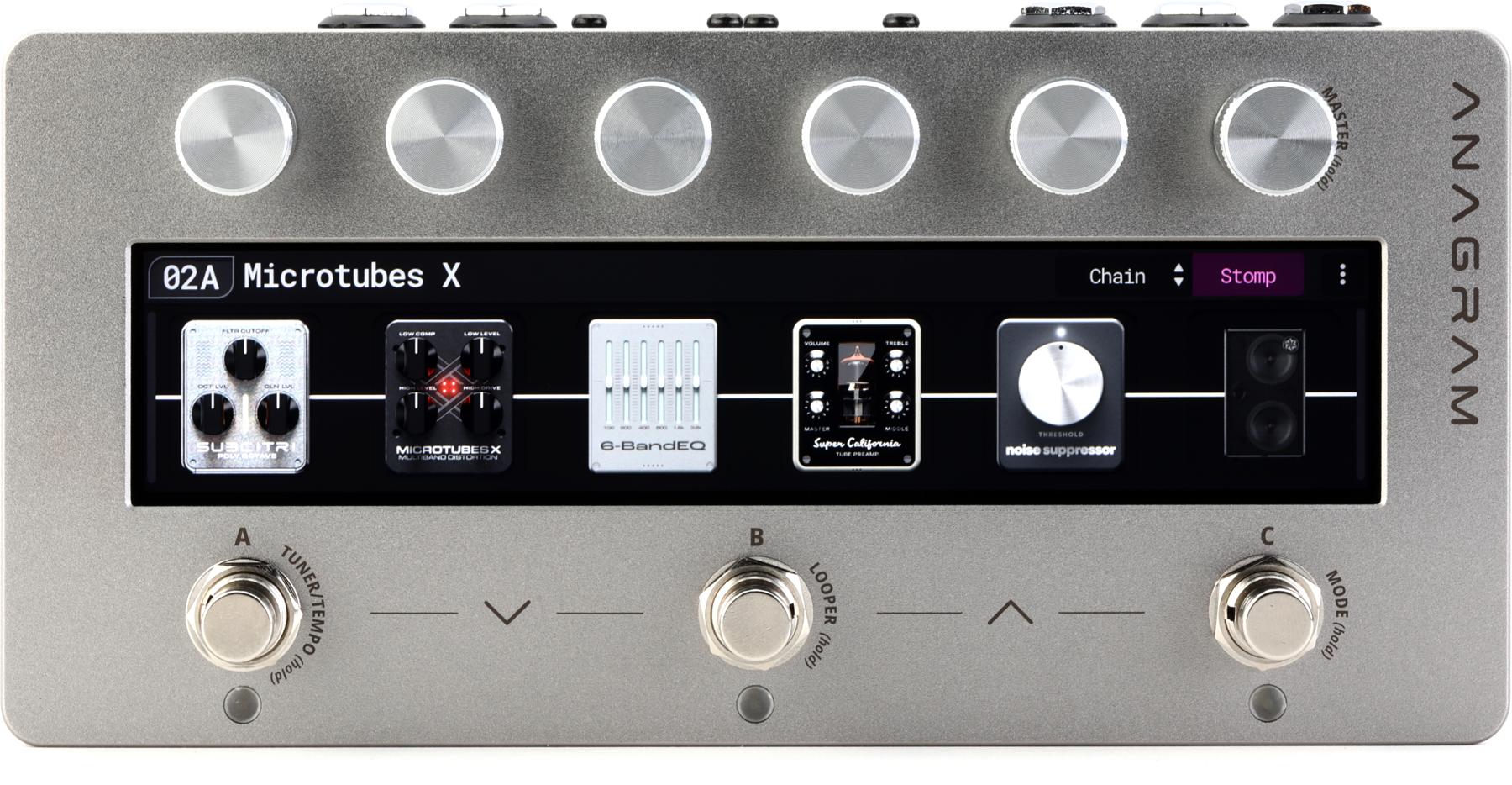If you don’t follow the many-splendored musical world of noisy psychedelia, you might be surprised to know that Oliver Ackermann, co-founder of the sometimes psychotic but often thrilling stompbox concern Death By Audio, also helms the equally psychotic and thrilling band A Place to Bury Strangers. If you’ve seen APTBS live, you’ll understand much about what makes Death By Audio pedals unconventional. APTBS is generally a sensory overload experience. They are loud, sonically confrontational, and capable of oscillating between chaos and dark beauty. Last year marked the 13th anniversary of the band’s breakthrough LP, Exploding Head, and, in typically perverse fashion, Ackermann elected to celebrate that most unlucky of anniversaries with a triple delay named in the LP’s honor.
In very relative terms, the Exploding Head seems normal compared to many DBA pedals. It’s three identical delays run in series. Simple, right? But that simplicity belies great range and a deep capacity for weirdness and subtlety. Exploding Head creates washy reverbs, percussive multi-head delay effects, and mutant delays that chatter like rogue tremolos. It can feel quirky and tricky to handle as you get to know it’s weird ways. But mastering just a few simple tricks makes the Exploding Head an engaging, painterly, and even practical effect.
Honed To Honor the Head
Delays arranged in series are one of the coolest ways to mangle and massage sound and time. I often prefer the texture and complexity of two simple delays to traditional delay-and-reverb setups because fewer overtones and harmonics go missing in the wash. In fact, a two-delay setup can actually enhance certain overtones as echoes intertwine and collide. The Exploding Head expands on this concept and enables deep exploration of those interrelationships.
The Exploding Head is effectively an evolution of DBA’s own extinct and much-coveted Ghost Delay—an effect instrumental in creating the blown out, industrial, Jesus and Mary Chain-meets-Isn’t Anything haze of Exploding Head. The Ghost Delay utilized three cascading delays as well, but featured preset wet/dry blends instead of the three independent blend controls on the Exploding Head. That design change, however, makes a big difference.
”The bright, rhythmic underpinning of the echoes makes individual delay lines more distinct as you add in others.“
Controls are superficially simple. There are delay time, feedback, and wet/dry blend knobs, just as you’d see on any delay. But like an analog synthesizer, the interactivity between the three cascading sets of controls makes it hard to replicate sounds precisely, and there are no presets or digital control. Practice and tuning your ear to the pedal’s quirks and tendencies helps you engineer roughly identical setups pretty readily. Still, I was inclined to snap pictures of settings that made my favorite sounds—just in case.
Exploding Head’s infinity switch is another treat that distinguishes it from the Ghost Delay. Engaging it feeds the output from the third delay in the sequence (red) into the first (black), which enables momentary self-oscillation effects. The addition of this option—on top of a delay array that already lives happily at the edge of feedback and creates blurry washes of polyrhythms—makes the Exploding Head a delightful chaos engine if you choose to take it there.
Willows and Hurricanes
The Exploding Head’s chaotic side is a big part of the pedal’s personality. But it can be civilized and subdued, too. It happily generates trad delay textures. And when you get a feel for how Exploding Head works as an organism, you’ll find a varied lot of echo colors that are as familiar as they are freaked out.
While digital, the basic tonality of a single Exploding Head delay line is not worlds apart from a bright analog echo. It’s a touch trebly. There is also perceptible clock noise at many settings, just like an analog unit. This can be jarring at first if you like your delay lush and dreamy, but the bright, rhythmic underpinning of the echoes make individual delay lines more distinct as you add in others, which also has a thickening and darkening effect that blunts the clock noise.
A good place to start exploration of the Exploding Head is to turn all the blend controls to completely dry settings, set the time and feedback controls to near-identical levels (each at high noon is a good place to start,) and then advance the blend of the first delay until it sounds right. As you slowly, incrementally elevate the blend levels of the other delays and shift the other parameters, you’ll hear the signal get thicker and wider. And, depending on your time and blend settings, the pedal will generate wild multi-head patterns or subtler variations that have the quality of tremolo or chorusing.
Like any delay, you can use short delay times, dry blends, and long feedback levels to approximate reverb textures. These are a great addition to composite delay images in any position. But I found that situating reverb-like textures in the middle position enables the most ambient colors. The middle delay can also be critical in creating polyrhythmic echoes. Mating a delay-forward blend setting to an odd subdivision of the first delay generates complex percolating repeats that vary in volume. It sounds a little like a multi-head delay arranged via William Burroughs cut-up method—disorienting but also a source of sound poetry that shifts your perspective dramatically.
The Verdict
It seems preposterous to try to assign ratings to the Exploding Head. Some players will find great utility in the pedal, readily encounter beauty in the intermingled echoes, and get blissfully lost exploring the interactive controls. Other players will be baffled. Given that, a prospective customer should be prepared to round up or down—particularly where the tone and ease of use scores are concerned.
One thing all users will agree on, though, is that the Exploding Head sounds colossal. And with a loud amplifier, it sounds wonderfully alive. In the absence of presets, you’ll have to be pretty fearless to make changes to the controls on the fly. But perhaps a chain of Exploding Heads is the answer? That would be an expensive proposition. But it might actually result in few exploding heads, too.





















